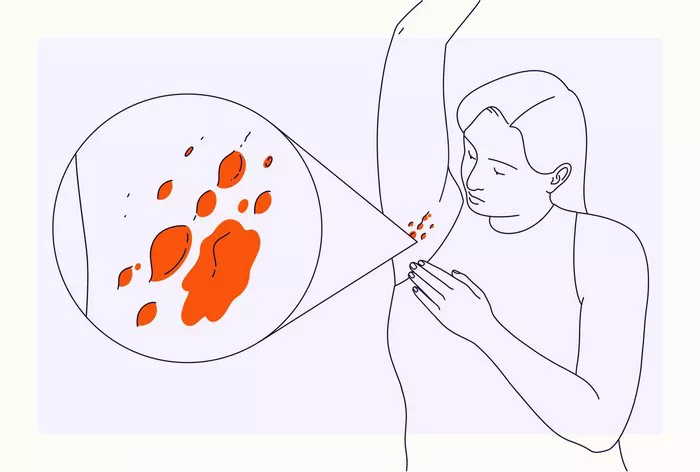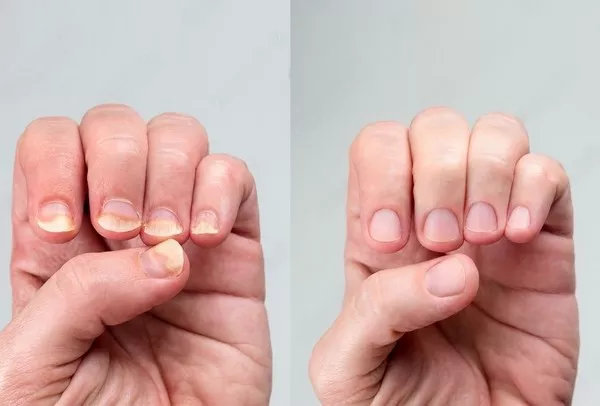Hidradenitis Suppurativa (HS), a chronic inflammatory skin condition, can significantly impair one’s quality of life. Characterized by painful nodules, abscesses, and sinus tracts in areas with apocrine sweat glands, such as the armpits, groin, and buttocks, HS often follows a relapsing and remitting course. The unpredictable nature of HS flare-ups poses challenges for both patients and healthcare providers alike. While the exact etiology of HS remains elusive, understanding the triggers behind flare-ups is crucial for effective management and improved outcomes.
The Complex Interplay of Factors
HS is believed to arise from a combination of genetic predisposition, immune dysfunction, and environmental factors. The disease often manifests during adolescence or early adulthood, suggesting a role for hormonal changes in its pathogenesis. Additionally, several comorbidities, including obesity, metabolic syndrome, and smoking, have been associated with an increased risk of HS. However, it is the interplay of these factors that contributes to the development of flare-ups.
Inflammation: The Driving Force
Central to the pathophysiology of HS is inflammation. Dysregulation of the immune system leads to the formation of inflammatory lesions within the hair follicles and sweat glands. This inflammatory cascade involves various cytokines, chemokines, and immune cells, perpetuating tissue damage and fibrosis. Flare-ups occur when this inflammatory response is triggered or amplified by external or internal stimuli.
Environmental Triggers
Numerous environmental factors have been implicated in triggering HS flare-ups. Friction and trauma to the affected areas, such as tight clothing or repetitive movements, can exacerbate inflammation and lead to new lesions. Heat and humidity can also worsen symptoms by promoting sweating and bacterial overgrowth. Furthermore, exposure to irritants, such as harsh soaps or detergents, may aggravate existing lesions, highlighting the importance of gentle skincare practices.
Lifestyle Factors
Certain lifestyle choices can influence the severity and frequency of HS flare-ups. Obesity, for instance, not only increases mechanical stress on the skin but also promotes systemic inflammation, further exacerbating the disease. Smoking, another well-established risk factor for HS, not only impairs immune function but also alters the skin microbiome, creating a favorable environment for disease progression. Conversely, adopting a healthy lifestyle, including regular exercise and a balanced diet, may help mitigate some of these risks and improve overall well-being.
Hormonal Influence
Hormonal fluctuations play a significant role in the pathogenesis of HS, particularly in female patients. Flare-ups often coincide with menstrual periods or hormonal changes associated with pregnancy or menopause. Estrogen and androgen receptors present in the skin may modulate immune responses and sebaceous gland activity, contributing to disease activity. Hormonal therapies, such as oral contraceptives or anti-androgens, have shown promise in managing HS symptoms by targeting these underlying mechanisms.
Microbial Dysbiosis
The skin microbiome, consisting of various bacteria, fungi, and viruses, plays a crucial role in maintaining skin health and immune homeostasis. In HS, alterations in the microbial composition, known as dysbiosis, have been observed. Staphylococcus aureus, in particular, is frequently isolated from lesional skin and may contribute to inflammation through the release of toxins and activation of the innate immune system. Antibiotic therapy targeting these pathogenic bacteria can help alleviate symptoms and reduce the frequency of flare-ups.
Psychological Stress
Stress, whether physical or psychological, has long been recognized as a potential trigger for inflammatory skin conditions, including HS. The intricate network of connections between the nervous, endocrine, and immune systems, known as the neuroendocrine-immune axis, plays a crucial role in mediating the effects of stress on skin health. Stress-induced activation of the hypothalamic-pituitary-adrenal (HPA) axis leads to the release of cortisol and other stress hormones, which can modulate immune responses and exacerbate inflammation. Moreover, stress may also influence health behaviors, such as sleep patterns and dietary choices, which can indirectly impact HS severity.
Genetic Susceptibility
Although environmental factors are known to play a significant role in triggering HS flare-ups, genetic susceptibility cannot be overlooked. Several genetic variants associated with HS have been identified, primarily involving genes related to immune function, such as the NOD2 and IL-23 pathways. These genetic predispositions may influence disease phenotype and treatment response, highlighting the importance of personalized approaches to management.
Conclusion
Hidradenitis Suppurativa flare-ups are complex phenomena influenced by a myriad of factors, including inflammation, environmental triggers, lifestyle choices, hormonal fluctuations, microbial dysbiosis, psychological stress, and genetic susceptibility. Recognizing these interconnected pathways is essential for tailoring treatment strategies to individual patients and improving outcomes. A holistic approach that addresses both the physical and psychosocial aspects of HS is paramount in managing this challenging condition and enhancing the quality of life for those affected. By unraveling the causes of flare-ups, we move one step closer to alleviating the burden of HS and providing hope for a brighter future.


























